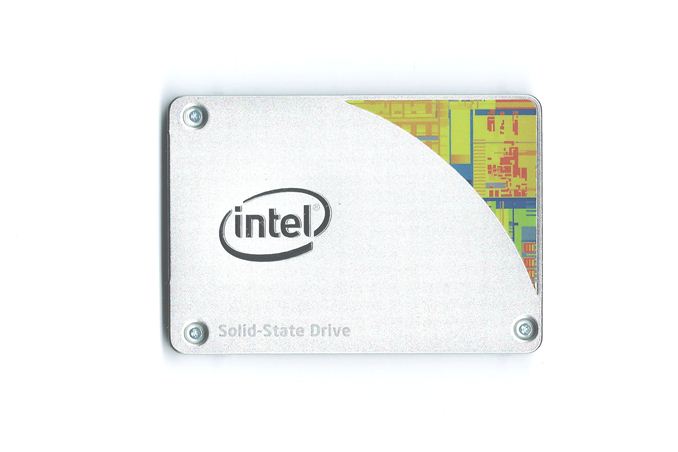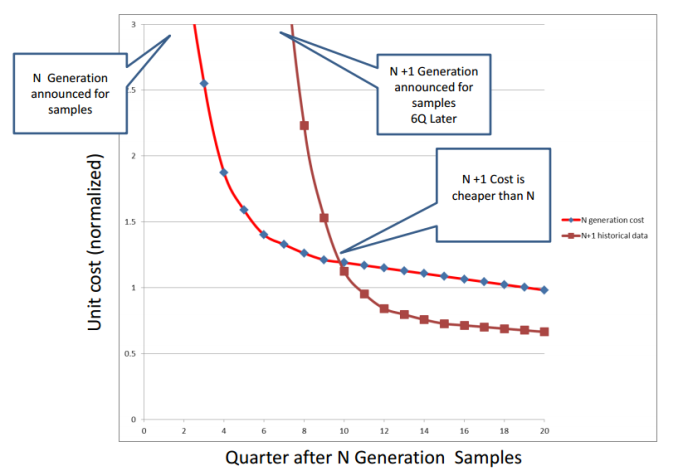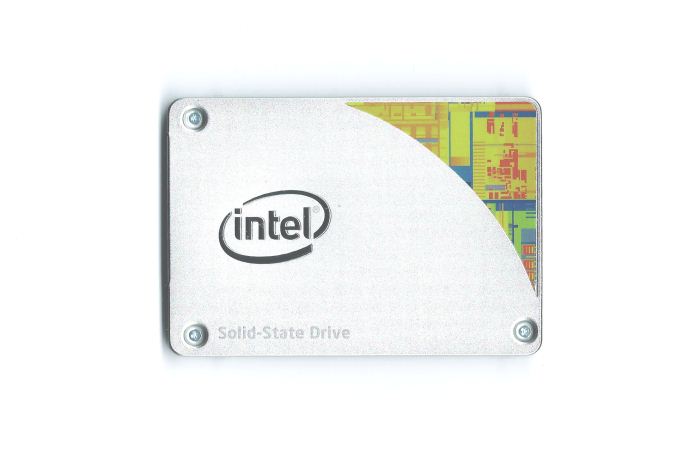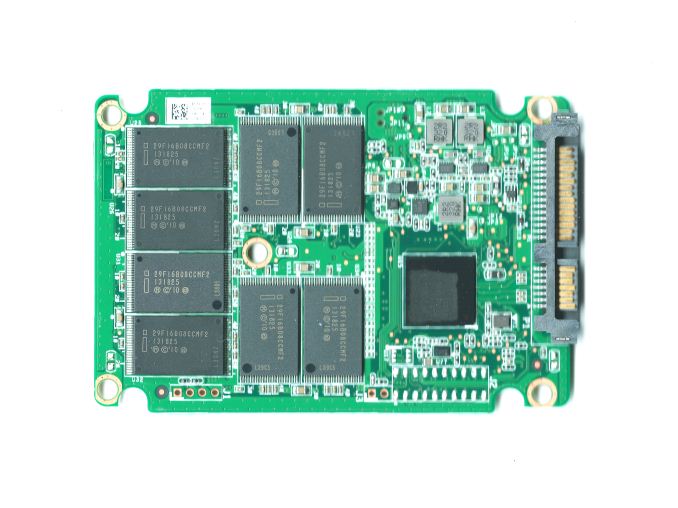Intel SSD 530 (240GB) Review
by Kristian Vättö on November 15, 2013 1:45 PM EST- Posted in
- Storage
- SSDs
- Intel
- Intel SSD 530

The consumer SSD market is currently at a turning point. SATA 6Gbps is starting to be a bit long in the tooth but SATA Express support is still very limited. There is currently only one motherboard (ASUS Maximus VI Extreme) that has an M.2 slot and even that is limited to PCIe x1, making M.2 quite redundant at this point. On top of the lack of motherboard support, all M.2 SSDs are OEM only at the moment, which makes sense because it's pointless to sell a product that can't be used anywhere yet. The only way to get the full M.2 PCIe experience right now is to buy one of the few laptops with M.2 PCIe SSDs, such as the new Sony VAIO Pro 13 we just reviewed and the 2013 MacBook Air (though it has a proprietary connector).
The wait for moving to PCIe has put manufacturers in an odd situation. Ever since SSDs started gaining popularity there's always been a ton of room for improvement. Fundamentally the SSD market has gone through three different stages. First everyone focused on fast sequential speeds because that was the most important benchmark with hard drives. Shortly after it was understood that it's not the sequential speeds that make SSDs fast but the small random transfers that make hard drives crawl. IOPS quickly became a word that every manufacturer was shouting. Getting the IOPS as high as possible for marketing reasons was an important goal for many but in the process many bypassed another very important metric: Performance consistency. In the last year or so we've finally seen manufacturers paying attention to making performance more consistent instead of just focusing on the peak numbers.
The problem now is that every significant segment from a performance angle has been covered. Almost every SSD in the market is able to saturate the SATA 6Gbps bus. Random IO has also more or less stayed the same for the last year, which suggests that we've hit a hardware bottleneck. IO consistency is the only aspect that still requires some tweaking but most of the latest SSDs do a pretty good job at it too. There's nothing that manufacturers can do with SATA 6Gbps to really take performance to the next level. What makes things even more complex is the physics of NAND because read and program times increase as we move to smaller lithographies.
Since driving performance up is getting harder and harder, manufacturers need to rely on other methods to improve their products. Transitioning to smaller lithography NAND is one of the most common ways because it helps to reduce cost. Even though smaller lithography NAND is actually a step back when it comes to NAND endurance and potentially performance, it's still a powerful marketing tool because consumers tend to think that smaller equals better performance and lower power (we can thank CPUs and GPUs for that mindset). Another rising aspect has been power consumption and especially Windows 8's DevSleep has been a big part of that.
With an overview of the state of the SSD market out of the way, let's focus on the actual Intel SSD 530. The above probably would have been a good tease for the first consumer M.2 drive or a revolutionary SATA 6Gbps drive but unfortunately that's not the case. Intel didn't make much noise when they released the SSD 530 in August and there's a reason for that. Like its predecessor, the SSD 520, the SSD 530 is still SF-2281 based but unlike the SSD 335, the SSD 530 uses a newer silicon revision of the SF-2281. The new B02 stepping doesn't change performance in any way but it lowers power consumption especially when the drive is idling.
Similar to the SSD 335, the SSD 530 moves from 25nm IMFT NAND to 20nm IMFT NAND. I went through the major differences in the SSD 335 review, but shortly put Intel's 20nm NAND has slightly slower erase times and is otherwise comparable to their 25nm NAND. Some of you probably would have preferred that Intel had stuck with 25nm NAND in their high-end consumer offering but the fact is that 25nm NAND is no longer cost effective and hasn't been for over a year. Let me show you a cool graph of NAND price scaling:
Courtesy of Mark Webb, taken from his 2013 Flash Memory Summit presentation
Now let's apply that graph to the case of Intel's 20nm NAND. "N generation" in the graph means 25nm NAND and "N+1 generation" stands for 20nm NAND. In April 2011 IMFT announced that they have started sampling 20nm MLC NAND (you should now be looking at the "N+1 Generation announced for samples" part, which is at about quarter 7). The Intel SSD 335 was released six quarters later in October 2012. As you can see in the graph, that's the exact spot when 20nm NAND prices started to settle down and they're about 30-40% cheaper than 25nm NAND.
Since 25nm NAND was more mature and had higher performance and endurance, Intel kept using it in the SSD 520 while the mainstream SSD 300-series switched to 20nm NAND. However, the 20nm process has now matured and both performance and endurance are close to what the 25nm process offered, making it viable for Intel's high-end consumer SSD as well. I'd like to remind that while the graph above is based on historical data, each generation from every manufacturer is its own challenges. Delays and unexpected wafer cost increases can shift the N+1 graph to the right, meaning smaller price benefits and a longer period for the new generation to become cost efficient.
Unlike Intel's previous SSDs, the SSD 530 is available in three different form factors: 2.5", mSATA and M.2 (80mm). The capacities for the 2.5" version range from 80GB to 480GB, whereas the mSATA is limited to 240GB and M.2 to 360GB (those are the highest capacities you can get with 64Gbit NAND; mSATA only has room for four packages and 80mm M.2 for six NAND packages). The 2.5" version has also gone through a facelift. Aluminum has remained as the building material of the chassis but the Intel logo is now bigger and more centered and there's a sticker representing a die shot in the upper right corner.
| Intel SSD 530 2.5" Specifications | ||||||
| Capacity (GB) | 80 | 120 | 180 | 240 | 360 | 480 |
| Controller | SandForce SF-2281 | |||||
| NAND | Intel 20nm MLC | |||||
| Sequential Read | 540MB/s | |||||
| Sequential Write | 480MB/s | 490MB/s | ||||
| 4KB Random Read | 24K IOPS | 41K IOPS | 45K IOPS | 48K IOPS | ||
| 4KB Random Write | 80K IOPS | |||||
| Endurance | 20GB/day for 5 years | |||||
| Warranty | 5 years | |||||
Intel rates the SSD 530 at 20GB of host writes for five years. This is a typical rating for high-end consumer SSDs with a 5-year warranty and for heavier workloads Intel advises you to get an enterprise-grade drive. For the record, the Intel SSD 520 was also rated at 20GB/day for five years so there's been no degradation in that sense.
The PCB itself looks similar to the SSD 520. There is a total of 16 NAND packages (eight on each side of the PCB) and no DRAM similar to every other SandForce based drive. However, what's interesting is that the actual controller is Intel branded. I'm still waiting for Intel to clarify the reason but this isn't the first time we've seen a manufacturer branded SandForce controller (Toshiba has been doing this for a while).
Test System
| CPU | Intel Core i5-2500K running at 3.3GHz (Turbo and EIST enabled) |
| Motherboard | AsRock Z68 Pro3 |
| Chipset | Intel Z68 |
| Chipset Drivers | Intel 9.1.1.1015 + Intel RST 10.2 |
| Memory | G.Skill RipjawsX DDR3-1600 4 x 8GB (9-9-9-24) |
| Video Card |
XFX AMD Radeon HD 6850 XXX (800MHz core clock; 4.2GHz GDDR5 effective) |
| Video Drivers | AMD Catalyst 10.1 |
| Desktop Resolution | 1920 x 1080 |
| OS | Windows 7 x64 |
Thanks to G.Skill for the RipjawsX 32GB DDR3 DRAM kit













60 Comments
View All Comments
Duncan Macdonald - Saturday, November 16, 2013 - link
Would it be possible for you to do an additional SSD test - how much does the write performance recover after a 30 minute idle period. Most consumer PCs (and even many servers) tend to have idle periods every day and if the garbage collection and free space erasure algorithms on the drive can get it back to a near new condition then this would be significent.'nar - Monday, November 18, 2013 - link
I agree, GC and idle time makes TRIM unnecessary, and even works better anyway. These benchmarks are a gross exaggeration of anything done in real-world usage. On the one hand everyone recognizes that fact, but on the other they keep hammering consistency and incompressible data like everyone does video editing all day every day.thefoodaddy - Saturday, November 16, 2013 - link
The prices in that table for the Seagate and Crucial 240GB are, sadly, not $150 ($220 and $180, respectively)--way to get my hopes up, Dyntamitedata.com!purerice - Sunday, November 17, 2013 - link
On google shopping I just typed in "Seagate SSD 600" and selected 240GB. 50+stores had them and 1 store has them for $149.99 with $0 tax and $0 shippingKristian Vättö - Sunday, November 17, 2013 - link
The prices were taken on November 12th and both drives were $150 back then (probably a temporary sale).slickr - Saturday, November 16, 2013 - link
Man these SSD's seem like a lot of hard work to me. I mean with all the firmware updates that need to be flushed, with all the failures that seem to be happening, with the inconsistent performances, with the fairly still high prices even after 4 years of SSD drives.I mean 4 years ago I though we would have at least 250GB for $150 by around this time, by around year 2014, but we we are still way off, I though 500GB SSD's would have started becoming more mainstream in 4 years, but now that we are here, now that I'm in the future it hasn't been done.
In fact some of the drives are still plagued by the same problems some of the first SSD's had. I mean I agree that the average SSD is more reliable and generally faster, but this is not by much and the prices have been slow to come down.
So I hope to see $150 250GB SSD's and more in the next several months, maybe 2014 will be the year, but I think if you just want reliability and security its best to go with normal hard drives that have huge capacity at cheap prices, I can get 1TB for $70 that is super cheap.
'nar - Monday, November 18, 2013 - link
I think you have been mislead by the benchmarks. They do not compare SSD's to hard drives, so you have no perspective. I recommend SSD's for everyone. They are faster and more reliable. Get a hard drive if you want your 1 TB of storage, which will be pictures, music, and video anyway, all things that would not benefit from SSD speeds.The only concern is that many people that complain about reliability fail to mention the model SSD that failed on them. I use Intel/Sandforce drive for systems I build for others, and OCZ/SandForce/Bigfoot on all of my own and never had a problem. I suspect that those looking for cheap, get cheap. If you want reliability don't look for the cheapest drive. As in all things, you get what you pay for. Find yourself a good drive, THEN look for a good price on it. Don't assume that any SSD made by a particular manufacturer is good.
name99 - Saturday, November 16, 2013 - link
"The problem now is that every significant segment from a performance angle has been covered."Unfortunately no. If *I* were an SSD manufacturer, I'd try to differentiate myself by putting together a hybrid drive that isn't crap. It is insane that, with 2013 almost over, there is, as far as I can tell, precisely one HD available that is a hybrid drive --- and that HD is available in one form factor+size, only as a bare drive, and with a minuscule pool of flash.
Complain about Apple all you like, but at least they have done (within the scope of what they control) something about this --- unlike freaking WD, Seagate, SanDisk and everyone else.
WTF have SanDisk (or Sandforce, or Samsung, or Toshiba, or ...) down something about this? Put together a decent package of some RAM, some flash, a controller, firmware that does the caching properly, and sell it to WD or Seagate to glue onto 1TB+ size drives? Apple's solution is expensive, probably too expensive, because it's using pretty good quality flash and a lot of it. Cut down to 48 or 32GB of flash that's slightly slower and I think you could still give a heck of a kick to a drive at an additional cost of $30 to $50. I'd certainly be willing to pay this.
I do not understand WD and Seagate. You go to Best Buy or Frys today, and they're each trying to reach out at you with a huge collection of basically identical drives --- they'll sell you a 2TB 2.5" in a green version, a black version, a red version, a blue version. (And those are not case colors, they are supposedly different models.)
The one thing they won't sell is the thing that would actually make a difference, that I'd be willing to pay for, a freaking HYBRID version that consists of more than adding 8GB of crappy bargain bin flash and lame caching software that won't even capture writes.
Bob Todd - Sunday, November 17, 2013 - link
Indeed. While it would be great if every laptop with a 2.5" drive had a mSATA or M.2 slot available, they are still the minority. I have SSDs as the boot drives of every machine sans one laptop that still has one of the 7200rpm 750GB Seagate SSHDs. I want at least 500GB of capacity for that machine, but I don't really want to drop the money for an SSD that big. A 7mm 500+ GB drive with 32+ GB of NAND needs to happen.emvonline - Sunday, November 17, 2013 - link
100% agree. A 32G SSD+1TB HDD would cover all storage needs and be very fast for 90% of all work. On the once a month timing that you load a rarely accessed 1GB video it would take 3 seconds more than a SSD. All this assumes the Cache software works correctly :-)